The 2012 Real Estate Power 100
By Jotham Sederstrom May 8, 2012 7:00 am
reprints


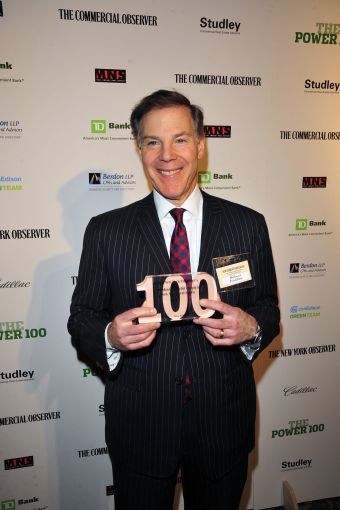

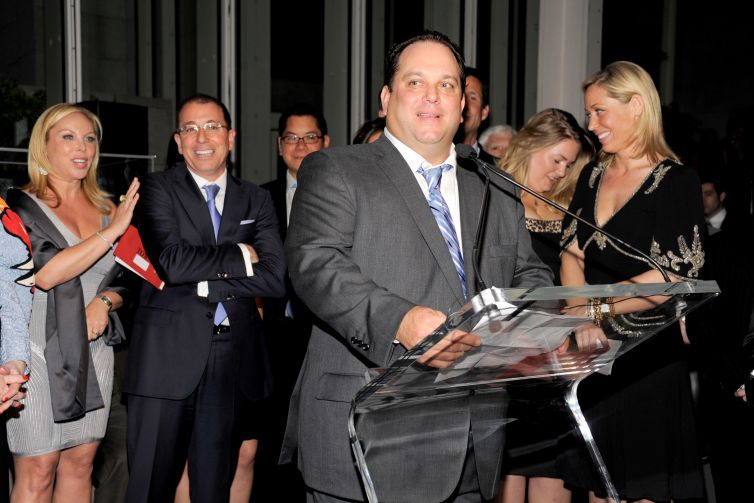




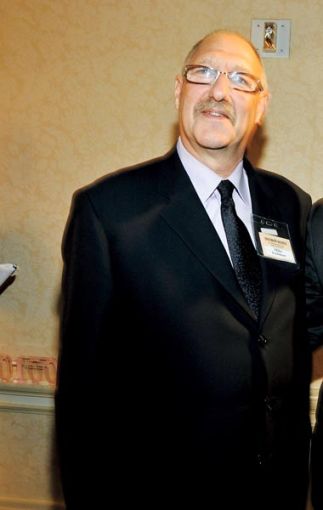


































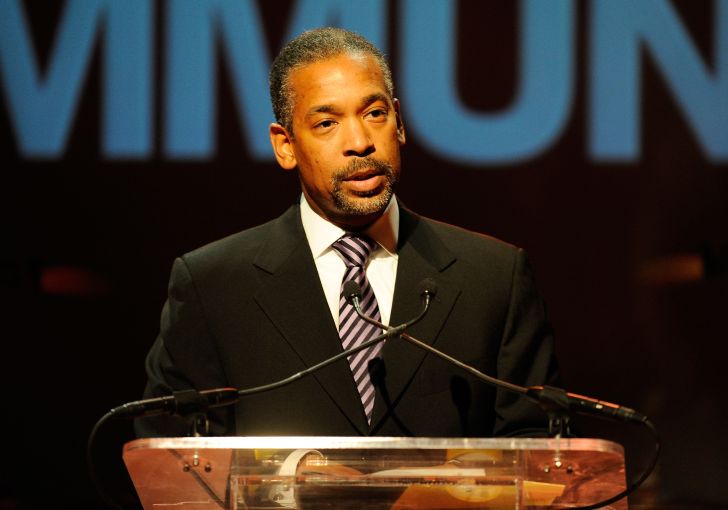














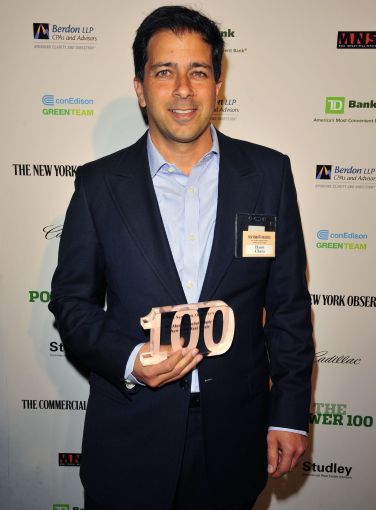














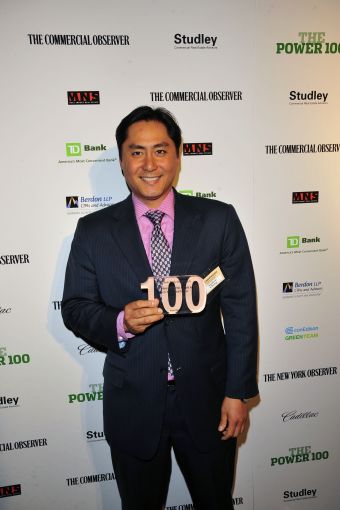









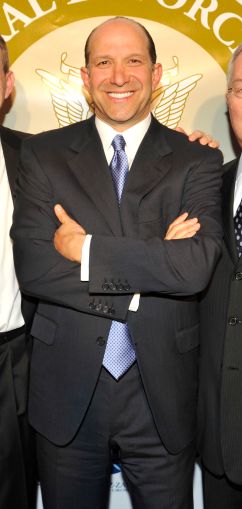












During the final months of his 2010 campaign for governor, Andrew Cuomo, the former United States Secretary of Housing and Urban Development, found himself high above Manhattan, sitting across a table from Stephen Ross.
To most political analysts and voters, Mr. Cuomo’s gubernatorial ascendance was already a foregone conclusion, thanks, perhaps, to the precision of an inner circle jam-packed with believers plucked from HUD and the attorney general’s office, yes, but also to a thick core of purple-veined veterans tied to dad Mario’s 11-year reign. News a year earlier that President Obama secretly implored Mr. Cuomo’s predecessor, David Paterson, to withdraw from the race—followed later by indications that his Republican opponent Carl Paladino was beginning to unravel—hardly hurt the frontrunner’s momentum.
And so it was with considerable wind beneath his wings, and goodwill to burn, that Mr. Cuomo rode an elevator to the top of 60 Columbus Circle, the building Mr. Ross and his Related Companies developed against considerable odds seven years earlier, near the apex of the real estate bubble. Yet despite an approval rating of 61 percent, the all-but-certain governor-in-waiting still faced one last force: the Real Estate Board of New York and 20 members of its executive committee.
“These were all principals,” said one person familiar with the gathering. “And it was obvious to everybody there that he was going to be governor. The race was over.”
The meeting drew the city’s most important names in real estate, not least of all Leonard Litwin, the 97-year-old billionaire who last year poured more cash into New York’s political coffers than anyone else in the state, including $76,000 to Mr. Cuomo. Others included Douglas Durst, whose Bank of America Tower had recently snagged the country’s first-ever LEED Platinum certification for an office building, and Burt Resnick, the heir to his dad’s 85-year-old, family-owned real estate empire.
Yet despite whatever combined wealth filled that room, or which accolades dizzied equilibriums, or what euphoria the soon-to-be governor provoked, it was Mr. Ross, REBNY’s chairman emeritus, who controlled the room that day. Indeed, before the committee members could object, Messrs. Ross and Cuomo had already vanished.
“And so we’re sitting there with no Steve Ross and no Governor Cuomo for at least a half an hour—if not more—and then finally Steve Ross ushers the governor into the room,” recalled another attendee, who spoke on the condition of anonymity. “It was probably about 45 minutes—his own private meeting—while all of us people who had thought we were pretty important sat there and basically just held our heels.”
“And so,” added the executive committee member, after a short pause and a stiff laugh, “we continued to hold Steve Ross in the high esteem that we’ve always had.”
What so impressed (or, perhaps, riled) Mr. Ross’s contemporaries that day wasn’t the length of time the Detroit native spent whispering into Mr. Cuomo’s ear—though that no doubt hammered home the point—but, rather, the specter of what glorious chits such an intimate chat with the future governor might one day bring. (That City Council Speaker Christine Quinn eventually helped carved a portion of the Related Companies’ 26-acre, mixed-use Hudson Yards project out of the living wage plan this year probably didn’t assuage worries some had of Mr. Ross’s ability to cash his chits.)
But whether speaking of Mr. Ross and his pipeline to Governor Cuomo, revelations that Senator Charles Schumer lobbied on behalf of the Durst Organization at 1 World Trade, or, more plainly, the ability to tell Arsenio Hall “You’re fired!” on national TV, the underlying virtues of power in New York’s real estate industry remain the same.
“Access and influence—that’s all there is to it. That’s the whole thing,” said one top real estate broker when asked what formula he uses to calculate power. “Can you influence the outcome of certain things and do you have access to the people who can help you push your agenda forward—and that’s whether you’re a developer, a broker, a politician or whatever. That’s what determines how powerful you are.”
Since 2008, when The New York Observer launched its annual Power 100 rankings, the mighty stick has shifted from Mr. Ross, who earned the coveted top position the same year as his meeting with Mr. Cuomo, to Douglas and Jody Durst, the nation’s two most thrilling arguments for sustainable development. It has included heretofore nobodies like Sam Zell before he acquired the Tribune Company while also projecting second thoughts on icons such as Daniel Tishman, who ranked No. 62 on the list in 2010, only to fall off entirely in 2011 and then re-enter the fold this year at No. 85.
All the while, the city’s real estate elite has been swimming against an economic tide. Ever since 2008, in fact, the list has been more notable for who drowned than who swam ashore. In 2009, for example, President Obama ranked No. 1 while fellow public servants also rose in power, thanks to a widespread belief that the so-called Great Recession might soon be fixed. And yet, as a whole, the list has always been more notable for its clubby nature—and 2012 is hardly an exception.
Of the 168 names on the list, nearly 65 percent hail from either multigenerational real estate dynasties or, inversely, financial services firms. The remaining inductees consist of brokers, lawyers, politicians and other professionals. Yet despite the imbalance, machers like Scott Rechler, Mary Ann Tighe and Howard Lutnick hold their own against the established Resnicks, Zeckendorfs and Fishers of the real estate world.
In short, cultivating the Power 100 has always been a combination of subjective reasoning, gimmickry and wishful thinking. As much as headlines influence rankings—like those behind Russian billionaire Dmitry Rybolovlev’s $88 million condo purchase at 15 Central Park West—so too does hard work, quantifiable evidence, recent awards and a wealth of other indicators, promotions and anecdotes not so easily explained.
What hardly ever drives change are the people behind the people behind the city’s 8.5 billion square feet of bricks. Nonetheless, as early as March each year, the city’s most aggressive public relations agents—or flacks as they’re often called, thanks to a collective talent to catch just that from clients—take to phones and email to generate the gospel. In some cases, they accentuate the net worth of their clients; in other instances, career or annual square footage is emphasized.
For real estate professionals whose numbers fail to impress, there are other tactics. To be sure, last month alone reporters at The Commercial Observer weathered a flurry of light threats and bribes, including promises of baseball tickets, dinners, lunches and breakfasts. But to hear it from one well-respected mouthpiece at one of the city’s largest public relations firms, the desperate push for attention on behalf of real estate clients is only natural.
“The month leading up to, and the weeks immediately after, are the most stressful time of the year,” said the public relations professional, who insists that, each spring, his clients harangue him daily for good placement in the issue, but ultimately denounce him when it doesn’t happen. “It’s the worst time of the year, the Power 100.”
With that thought in mind, take stock and enjoy this year’s list, a purely subjective ranking of relative power and the New York City brokers, developers, attorneys, politicos, landlords and lenders who wield it so well.
No. 100 on the Forbes list of the world’s billionaires, Dmitry Rybolovlev is the second-richest man on this list (maybe he should run for mayor on the Republican line next year). Perhaps the only person who had ever heard of him until this past December was Donald Trump, from whom he had purchased a $100 million Palm Beach mansion. But his purchase for $88 million of the record-setting Weill penthouse made headlines the world over—how much for an apartment in New York?!—and cemented him, and his equestrian daughter for whom the home is supposedly meant, into the city’s consciousness. As foreigners still flood this tiny island off the coast of America, welcome to the new reality of Manhattan real estate.
The octogenarian alumnus of Helmsley-Spear, where he worked for 40 years, has a leasing and management firm with five million square feet under its stead. But the firm did lose Rothmans, the men's department store, when it left the ABS Partners-owned 200 Park Avenue, where the store had been for 25 years. Don't fret: Rothmans moved to 222 Park Avenue South, a property ABS Partners Real Estate has an interest in.
The other guy you call when you need a real estate attorney in New York. The recession obviously slowed things down, but as everyone began to try to pick up the pieces or dig themselves out, Robert Ivanhoe helped. From bankruptcies to foreclosures to those ever-necessary (and obnoxious) public reviews, one of Mr. Ivanhoe’s attorneys is helping developers navigate the legal morass. They almost bought out Dewey, as the firm headed for bankruptcy itself, but that proved too much of a headache even for these notoriously tough guys.
In recent years Savanna founder Christopher Schlank and his co-managing partner, Nicholas Bienstock, have shown that through hard work, creativity and probably a little luck, there are still bargain deals to be found in ultra-competitive Manhattan. Last year the firm snapped up a collection of properties that included 100 Wall Street, 31 and 21 Penn Plaza and 80 Broad Street. Not only has the company been notably prolific in scooping up assets, it has shown it can turn around properties that prior owners have failed to make successful. At 100 Wall Street, for instance, the company has done about 160,000 square feet of deals since buying it out of distress late last year, filling most of the building’s vacancy.
One of the rising stars of residential real estate, Andrew Heiberger founded Citi Habitats in 1994 and built it into the largest rental brokerage in the city, selling it a decade later to Corcoran parent NRT. With that money he launched Buttonwood Development, creating a handful of high-end properties in Downtown Manhattan. Last year, he got back into the brokerage game, launching Town Residential, and in only a few months it has become one of the hottest outfits in town, opening six offices in Manhattan with nearly 300 employees on staff, many of them top agents from the city’s other elite firms.
When Henry Elghanayan split up the family’s real estate business to separate his holding from his brothers Tom and Fred (who started their own company, TF Cornerstone), Mr. Elghanayan, who many considered the patriarch of the family, decided unexpectedly to hand his siblings some of Rockrose’s best-known assets, such as Carnegie Hall Tower. Mr. Elghanayan and his son Justin instead took many of the development sites in the firm’s portfolio and have steadily moved to build on them. Rockrose has begun a multi-phase project to build 1,800 units in Court Square in Long Island City, one among a number of profitable residential projects it is engaged in.
Pictured: Henry Elghanayan
Three words: Sandy Weill’s penthouse. Kyle Blackmon made his name at 15 Central Park West, getting into the building early through a family connection, and by selling its high-flying units, his name, his brand, has become synonymous with luxury apartments in town. This helped him bring the Citi chief into the building for an impressive $43.6 million, and when it was time to sell (for charity, no less!), Mr. Blackmon got the call. People were flabbergasted by the $88 million listing, but that was exactly what Mr. Blackmon got when a certain Russian tycoon came knocking. It has won him the current highest listing on the market, a $77 million duplex at the Ritz, also overlooking Central Park. It’s like it’s his personal backyard.
Robert Verrone has reinvented himself in a way, moving, postcrash, to leverage his past experiences as a lender to provide advisory services at Iron Hound Management, where he’s currently active on 34 deals totaling $3.2 billion. He founded the firm in 2009 and has already completed 69 transactions at a whopping $6.3 billion. His knowledge has been put to work on a multitude of deals that will likely ring a bell: 14 Wall Street, 666 Fifth Avenue and 3 Columbus Circle.
Last year, when Greg Kraut left CBRE to start a branch office for the Canadian firm Avison Young in Manhattan, many in the brokerage industry were left scratching their heads. Why would a successful young dealmaker at the city’s biggest and most powerful brokerage company jump ship for a lowly startup? Credit Mr. Kraut for recognizing something then that has become plainly apparent more recently: a shakeup in the business, one of the biggest in years, is afoot, the perfect time for new ventures to offer themselves as alternatives to those who are either alienated, aspirational or both. Mr. Kraut has found talent receptive to his pitch. In recent weeks former Cushman & Wakefield CEO Arthur Mirante joined the firm as its tristate president. Mr. Kraut also brought on highly regarded Grubb & Ellis broker Michael Gottlieb. If it keeps pace with the caliber of hires it has drawn so far, the company could be a power in the coming years.
Pictured: Greg Kraut
It’s not only about what gets built, but about what happens after things get built, and Mike Fishman is the man who runs the show behind the scenes (and after closing time), overseeing not only an army of office cleaners, but also security guards. Last year, when cutting benefits was all the rage, he won yearly increases in compensation and continued or improved health care for union members. Mr. Fishman also holds a seat on the city’s Regional Economic Development Council.
When your dad is a famous actor, it can be hard to make a name for yourself, but Raphael De Niro has done an impressive job of it. Long seen as a rising star in New York real estate, the famously shy Mr. De Niro may have finally shed the "rising." After an early career of selling Downtown developments and lofts with lofty prices, Mr. De Niro has led Elliman's top team in 2011 and 2012. But Mr. De Niro has not cut all his ties to the celebrity lifestyle - clients include Justin Timberlake, Naomi Campbell and Renee Zellweger.
Stephen Meringoff committed entirely to New York City when he sold his last remaining Meringoff Properties asset in Los Angeles, The Taft Building on Vine Street, for $27.5 million at the end of 2011. Meanwhile, he and partner Leslie Wohlman Himmel welcomed City Harvest as its newest tenant when the nonprofit took 145,000 square feet at 6 East 32nd Street in April.
Michael Fried’s New York-based realty firm Phoenix has been quietly snapping up multi-unit residential buildings in greater New York. Using the recession to its advantage, Phoenix has managed to pick up a lot of well-priced properties in the last few years, amassing an impressive portfolio of highly in-demand affordable and middle-income housing units.
Under Ralph Herzka, Meridian negotiated $17.3 billion in loans in 2011—2,778 in all. He has devoted almost 30 years to providing real estate advisory services and somehow found time, after founding Meridian in 1991, to co-found mortgage banking firm Beech Street Capital. Mr. Herzka also sits on the board of directors of Ladder Capital. Undoubtedly one busy guy: He’s also led Meridian to the number three slot on the Mortgage Bankers Association’s 2011 list of total originations by firm. Meridian and Beech Street, in fact, ranked highly on several of the MBA’s lists.
Since David Greene’s promotion in 2010, Murray Hill Properties has expanded its brokerage division and started a new fund—its fifth. Mr. Greene also told The Commercial Observer last year that the company was thinking of moving to a broker-owned setup. Mr. Sturner has seen the firm he co-founded grow to own, lease and manage more than six million square feet of commercial real estate—over $450 million in capital. There have been bumps along the way, like the near default of 1180 Sixth Avenue, but the future seems bright.
Pictured: Norman Sturner
The Tishman name is synonymous with construction in New York, and for good reason. The World Trade Center—both iterations of it—the New School, 1 Bryant Park, the Plaza Hotel, even those crazy East River waterfalls a few years ago. If you want something built, and built right, you call Dan and John. And that is true nationwide, too, from projects such as the rebuilding of the Pentagon to the starchitect-endorsed City Center in Las Vegas. Now, as a part of AECOM, the firm has a larger global reach (and more money) than ever before.
Pictured: Dan Tishman
You’ll be hard pressed to find a major commercial real estate deal that one of these two hasn’t had a hand in. Jonathan Mechanic and Stephen Lefkowitz, both partners in Fried Frank’s real estate practice, negotiate deals on behalf of some of New York’s most boldfaced names. These include Condé Nast’s 1 World Trade Center lease, SL Green’s $416 million joint venture with Jeff Sutton to acquire eight East Side properties and Forest City Ratner in its Atlantic Yards project. Their client list alone is a Who’s Who of New York’s real estate elite.
Pictured: Jonathan Mechanic
The Zeckendorf family has built some of the grandest properties, both office and residential, in the entire city, from Millennium Tower to 515 Park Avenue and that godhead of limestone luxury, 15 Central Park West. The Robert A.M. Stern-designed tower famously sold $2 billion worth of condos, more than any other development in the history of the city, and factoring in the astronomical resales in the building, it is probably worth twice that much now. To top things off, Terra Holdings controls both Brown Harris Stephens and Halstead Properties, giving the Zeckendorfs one of the largest brokerage teams in the city.
Not since the construction of Central Park has a single project transformed a neighborhood as the High Line has, and these two, a freelance reporter and a Web guy, are the ones responsible. As the mayor is fond of pointing out, it took only $150 million in city funds (plus an equal amount from the private sector) to generate a full $2 billion in economic development. And counting. Every day more sites are snapped up along the elevated rail line local property owners once wanted dismantled. The third phase, encircling Hudson Yards, is all that remains, and if the hordes on a weekend are any indication, the High Line has been almost too successful.
When Bruce Mosler stepped down as Cushman & Wakefield’s chief executive in 2010 to get back to brokerage, most industry experts saw it as a return to his core strength. Indeed, Mr. Mosler, whose charm and entrepreneurial spirit make him a natural dealmaker, has been successful, handling a number of large leases, including NYU Langone Medical Center’s 420,000-square-foot deal last year at 2 Park Avenue. Lately, Mr. Mosler, who this week was appointed co-chairman of the Intrepid Sea, Air and Space Museum, has moved onto even bigger assignments, including being named as agent for Manhattan West, the multimillion-square-foot commercial office complex that Brookfield Properties plans to begin construction on later this year. Murmurs have percolated for months that Mr. Mosler may switch brokerage firms, a move he has denied. But the lingering speculation shows that an executive with leasing chops and managerial experience is in hot demand.
Elizabeth Stribling (Chanel suits, perfect coif and Southern charm) and Kirk Henckels (never without a bow-tie) seem like idealized types from the esteemed Upper East Side co-ops that the brokerage made its name selling. But donít let the genteel attire and manners fool you - these two aren't just sitting around sipping tea (well, maybe they are sipping tea), they're major overachievers. The firm has branched out to Brooklyn, created a fresh Web site that scored a nomination for the Webby awards and become the exclusive agent for London brokerage Savills. All this while still doing what they do best (selling the Astor apartment for $21 million) and selling out the Plaza. And Ms. Stribling also found time to chair the French Heritage Society and win the Insignia of Officier of the Legion of Honor (must be a highly caffeinated tea they're sipping!).
Pictured: Elizabeth Stribling
Paula Del Nunzio’s listings include the Stanford White mansion (listed at $49 million), the Rothschild mansion (listed at $30 million, in contract) and the Woolworth mansion (listed at $90 million—if she can sell it, she’ll break her own $53 million Harkness Mansion record). Ms. Del Nunzio is clearly a master when it comes to selling Uptown townhouses, just as Hall Willkie is masterful when it comes to overseeing the more than 350 brokers at Brown Harris. Mr. Willkie has also been working to expand the listings of the white-shoe firm famous for selling white-glove co-ops.
Pictured: Paula Del Nunzio
This New York philanthropic and real estate dynasty hasn’t been as active as in the past, but the brothers do continue to oversee a vast real estate empire. Much of it is Downtown, as well, where its holdings include 200, 377 and 380 Rector Place. The family has developed or acquired more than 50,000 apartments, 20 million square feet of office space and 8,000 hotel rooms, over the course of four generations.
Pictured: 78. Howard Milstein
One of the grand dames of city real estate, Ms. Ramirez has been a star in the city’s real estate firmament for going on four decades, having worked with everyone from Calvin Klein to Kirsten Gillibrand. She is friendly with Governor David Paterson, a rarity for a residential broker, and her firm is experiencing continued, considerable growth under leadership, expanding its footprint in both Brooklyn and the Hamptons over the past year through strategic partnerships.
HFF’s New York office is busy providing debt placement and arranging financing for deals like the $115 million refinancing it put together for RFR Holding Co. The firm also secured a $315 million refinancing for 340 Madison Avenue, successfully marketed multifamily properties at 210 and 220 East 22nd Street and arranged $500 million in financing for 919 Third Avenue. Other New York-area transactions include the representation of Storage Deluxe in its $357.31 million sale of a 16-property storage portfolio, though John Pelusi’s and Mike Tepedino’s reach far exceeds the metropolitan area.
The family-owned company has a firm stable of Manhattan office towers in its portfolio and has managed to keep several blue-chip tenants in them. Law firm Davidoff, Malito & Hutcher LLP re-upped for 17 years at 605 Third Avenue, and MacKay Shields moved in to 60,000 square feet at 1345 Broadway (a deal Fisher Brothers was not directly involved in). The firm, which started developing in the outer-boroughs in 1915 before eventually working its way to Midtown Manhattan, is holding steady after consolidating some of its trophy properties in 2010.
Pictured: Ken Fisher
The husband-and-wife team of Peter Hauspurg and Daun Paris has kept Eastern Consolidated busy. The firm has worked on such deals as the sale of the 800,000-square-foot office building at 375 Pearl Street, which netted $121 million, and the sale of 1150 Avenue of the Americas, which sold for $39 million. Meanwhile, the company maintains its international flair as the Eastern Consolidated team has grown to 40 sales brokers speaking 12 languages. And did you know: The couple lived on a 26-acre farm in Bedford, N.Y., where they have llamas and, until recently, Royal Dexter cows.
Change is afoot in the brokerage business and in some ways Glenn Rufrano could be at the center of it. C&W hailed Mr. Rufrano’s hiring in 2010 as move to install a leader with the sophistication and corporate pedigree to whip the company’s balance sheet into shape. Mr. Rufrano has insisted lately that his mission is to continue to improve C&W’s profitability, entry into other businesses like real estate fund management and overall growth. But many observers see a subcurrent: preparation by the company’s Italian parent, EXOR, to position C&W for an eventual public offering or outright sale, the kind of deal that would likely usher the industry’s most profound shakeup in recent years. Though that talk is still just rumors, in the consolidating world of brokerage it’s hard not to think that Mr. Rufrano’s success could have an especially profound influence on the company’s future.
Mr. Ratner has taken his ball, but he can't go home yet. The Barclays Center will actually open on time this fall, bringing professional sports back to Brooklyn, as well as Jay-Z, but the Cleveland-born developer has still yet to secure financing for the now-well-behind-schedule apartment towers. Those are now planned to be built modular, which has the potential to transform the way the city builds, but most New Yorkers will believe that when they see it. He completed one of the most beautiful buildings on the skyline by the world's most famous architect, with sky-high rents to boot, but the brand, not to mention the family name, has been so blackened in Brooklyn, it will be a wonder if he ever builds there again.
It has been a turbulent few years for the fashionable gang from Germany. Even with its ample overseas money, the firm found a number of its boom-time projects underwater. The ship is finally beginning to right itself, as RFR has bought back its coveted plot behind the Seagram Building earlier this year. At the same time, RFR was marketing a stake in the famous black tower, with the unheard of price of $2,000 a foot, though the reason was far from simple - a lawsuit by spurned partner Peter Brandt. Another, Harry Lis, has sued for supposedly missing profits, and Aby. Rosen split from fellow bon vivant Ian Schrager at the Gramercy Hotel
Pictured: Aby Rosen
After riling the Bloomberg administration with plans for never-materializing projects like a Coney Island development with an indoor ski hill and a helicopter landing station, Mr. Sitt has more recently turned his attention to buying and selling retail buildings in tony places like along Fifth Avenue. It's been a lucrative homecoming of sorts for a man who built his fortune and company with retail developments in low-income areas.
In a way, Robert Alexander and Steve Siegel have had tough luck over the past year. While big tenants like Viacom and Morgan Stanley just inked conservative but nonetheless huge leases, Mr. Alexander’s marquee client in the market, the Swiss bank UBS, went from considering hundreds of thousands, if not over a million square feet at the World Trade Center site, in what would have undeniably been a landmark deal, to pulling back on its real estate decision-making and staying put. As disappointing as that decision may have been for a broker with one of the city’s strongest reputations for handling mega leases, there’s no question the man often referred to simply as “Big” will be back at the forefront when large-scale deal activity revives.
Pictured: Robert Alexander
The German-born, New York City-based real estate investment group snapped up a 49 percent share in 900 Third Avenue in February, paying Investa Office Fund $172.7 million for its stake in the 36-story office tower. Paramount is one of a handful of companies that Mohamed Al Fayed wants to buy a leasehold from him for 75 Rockefeller Plaza, a building he is looking to unload from his portfolio. The eco-conscious group has 13 million square feet of Class A office space, and if it had its druthers, each square foot would be LEED-EB Gold-certified.
The Fortress Investment Group has continued to make strides with savvy real estate investments this year. Managing directors Constantine Dakolias and Chris Linkas have kept a steady hand, even in the midst of shake-ups like a rough second quarter and chief executive Daniel Mudd stepping down due to SEC allegations. The leaders have strengthened the companyís footing in regards to real estate.
Pictured: Chris Linkas
Deutsche Bank is championing the return of commercial mortgage-backed securities. The German financial institution offered $941 million in CMBS, and the reception showed a return to investors’ appetite for risk. Its analysts, meanwhile, have predicted that there will be $6.15 billion worth of new CMBS issues offered in the second quarter of 2012. Beyond the trading floor, Deutsche expanded its New York City footprint, taking 50,000 square feet at 4 Metrotech Center to launch its first Downtown Brooklyn office.
Since Steve Kenny was promoted to CREB region executive for New York and New Jersey back in 2010, he’s seen the bank act as administrative agent on One57, leading the syndication that’s providing a $700 million construction loan to Gary Barnett’s Extell Development Co. There simply aren’t that many banks that could lead the syndication on such a large loan. Bank of America continues to provide smaller loans around New York, even as other areas of the bank remain questionable and it sells of some of its real estate holdings around the city.
Following a period of near controlled flight into terrain, real estate lender iStar found the financing that it needed to stay aloft in 2011. Still, it’s portfolio is massive—whether you think this is a good or a bad thing. Jay Sugarman also extends his personal clout as chairman of the board of LNR, the largest special servicer in the country, servicing trusts with more than $175 billion in commercial mortgage loans.
It isnít easy being the rector of Trinity Church, New York City's holiest of landowners. Reverend James Cooper has been taken to task in the press for allegedly angering church board members by demanding health and life benefits until age 72 and $1.4 million over seven years to staff his ministry. But while the board is upset, its real estate portfolio has never been better, with Trinity Real Estate and its president, Jason Pizer, racking up a slew of great deals across Hudson Square in recent months. Havas' 260,000-square-foot lease at 200 and 205 Hudson Street, a New York University-Polytech transaction that clinched occupancy at 137 Hudson Street and a 99-year lease with an affiliate of Beacon Capital Partners to develop offices at 330 Hudson Street are only a few of the recent highlights for the city's most heavenly landlords. We expect good things to come.
Pictured: James Cooper
In March, Square Mile told The Commercial Observer that its newly minted relationship with USAA Real Estate - which bought a sizable interest in the firm - would boost its long-term growth objectives. With $2 billion in equity already invested over several different real estate funds since opening shop in 2006, it's hard to fathom. Key seems to be thoughtfully chosen partnerships, which have led to successes like the acquisition of an $880 million portfolio of real estate loans from Bank of America or 45 performing and nonperforming hotel loans - face value $385 million. It also provided the equity that got 2 Gotham Center built and ultimately sold for $415.5 million.
Pictured: Craig Solomon
His partner, Lehman Brother’s went bankrupt, the economy very nearly collapsed and leasing activity in the city came to a near standstill. Yes, David Levinson faced a few hurdles in his plans to redevelop 200 Fifth Avenue, but his firm, L&L Holding Company, pulled through and the building, after attracting huge leases with Eataly for its retail space and Grey Advertising and Tiffany & Co. for its office floors, is one of the most buzzed-about success stories in the city. Now Mr. Levinson is getting behind the next trend: a feeling that all the popularity of Midtown South will have to spill over Downtown eventually. In recent weeks he and Beacon Capital purchased 222 Broadway in a bold $230 million deal. The company is also staying busy in Midtown with a plan to build a new skyscraper at 425 Park Avenue.
Pictured: David Levinson
From a two-man operation founded in the mid-1980s, Massey Knakal grew into one of the city's largest and most visible real estate sales brokerages by focusing on smaller deals, wildly outpacing all of its rivals in transactional volume and embracing a sophisticated approach that relies heavily on carefully recorded market data and a unique system of placing brokers in set geographic boundaries to allow them to become true experts on the products they sell. The company's success is personified by its founders. Bob Knakal, the companyís highest-producing broker, is not only its most recognizeable executive but well-known industrywide for the analysis he offers on hot button issues like the economy and politics. Paul Massey, meanwhile, has made an impressive push to build its infrastructure and service lines, adding retail brokerage, mortgage financing and now an investment fund business.
Part of good management is knowing whom to hook your wagon to. Thanks to the savvy of co-founders Joel Seiden and Ofer Yardeni, Stonehenge didn't waste time getting 2012 started on a positive note. In late January, it announced that it had acquired, with JV partner SL Green, five retail and two multifamily properties for just over $193 million, bringing its portfolio of properties owned and managed to 27. Soon thereafter, its Stonehenge Fund III acquired 364 West 18th Street for $34 million, reminding us that it isn't afraid to go it alone either.
Pictured: Joel Seiden
Jones Lang LaSalle used to be the biggest real estate services firm no one ever heard of, at least in Manhattan, where the business was long dominated by such established names as Cushman & Wakefield and CBRE (whose predecessor was Insignia ESG). Peter Riguardi, the company's tristate region president, has presided over remarkable change at the firm, recruiting such top talent as Mitch Konsker, Paul Glickman, Scott Panzer and Richard Baxter, to name a few, while, by all accounts, keeping the peace as the firm's culture has inevitably shifted from its past as a somewhat sleepy consulting-oriented company into an environment that, like any successful brokerage company, is steeped with competition. It's not a surprise given his deft management that the company is increasingly handling big deals and top-agency assignments.
As one of the largest private equity firms in the country, Cerberus owns everything from Remington rifles to the Yellow Pages (the firm is in the process of acquiring the outmoded doorstop from AT&T). Specializing in real estate private equity, Ron Kravit has overseen high-profile retail acquisitions and financing for commercial and residential projects around the country.
New York City had the largest public housing stock in the nation, and these two are the ones responsible for it. Mr. Rhea was hired by Mayor Bloomberg in 2009, having cleaned up public housing in Washington, D.C., and now he is doing the same in New York. With rundown projects in need of remaking, Mr. Rhea and Mr. Harris have been looking at dynamic ways to replace towers in the mark with more low- and mid-rise, community friendly projects. At the same time, they fight in Washington and Albany for an ever-dwindling share of federal housing dollars.
Pictured: John Rhea
One of the august New York City real estate families, the Resnicks may be quieter than some of their compatriots on this list, but they still own 6 million square feet of pristine office property and many thousands of apartments, not counting holdings nationwide. While Jack Resnick & Sons has been building less of late, the company has done much to maintain what it already owns, leading the way in sustainable retrofitting. Breaking new ground as it has in the past, the latest new work is in up-and-coming Hudson Square, where two big office conversions are underway.
Pictured: Burton Resnick
Charles Bendit and Paul Pariser could very well be who the city - and Midtown South in particular - have to thank for the recent wave of tech tenants, what has become one of real estate's, not to mention the entire Manhattan economy's, brightest spots. It all started when the pair lured Google to take space at their Chelsea office building, 111 Eighth Avenue, years ago, a transaction that touched off the area's transformation into a Silicon Alley that is now beginning to rival its West Coast counterpart. Just as Donald Trump's purchase of 40 Wall Street for a purported $1 million in the bleak depths of the early 1990s recession has gone down in real estate lore, so too will Bendit and Pariser's eventual sale of 111 Eighth Avenue last year to Google for an eye-popping $2 billion be remembered as one of the cityís all-time-great real estate investments.
At Ladder, the past 12 months have seen a $230 million loan originated for the Durst Organization’s 1133 Avenue of the Americas, $45 million go to Lighthouse International’s 111 East 59th Street and $75 million allocated for the Related Companies’ 1 Union Square South. The next 30 days alone we hear they’ll be originating about $400 million in loans, so it’s no surprise—or shouldn’t be—to see Brian Harris and Greta Guggenheim land on this year’s list. Next month, co-founder Ms. Guggenheim becomes chief investment officer at the firm, making room for even more firepower, as Michael Mazzei moves into her slot as president.
Under Pam Liebman's direction, Corcoran has continued to dominate Brooklyn and the $1 million brownstone buyer (which may not have the same cachet as a sprawling Park Avenue penthouse buyer, but it goes a long way toward accounting for Corcoran's brisk sales volume). Not that Corcoran doesn't have a horse in the high-end market race, with big deal broker Leighton Candler on their team. Also, with the appetite for condos raging the way it has been, Corcoran Sunshine, the group's development and marketing arm, is poised to have a very good year.
Douglas Elliman Dottie Herman and Howard Lorber have created such a successful brand for themselves that theyíve considered dropping "Prudential" from their name altogether. Now thatís power! They're the top company in the Prudential group and the city's biggest brokerage, after all, and likely to stay that way as long as they're snapping up smaller firms, like international brokerage firm Stratus Realty, which they acquired last month. No slouches when it comes to side projects, the pair also have hobbies- Mr. Lorber was South Florida's highest-paid chief executive during his time at the Vector Group this year while Ms. Herman hosts radio real estate talk show Eye on Real Estate.
Pictured: Dottie Herman
For Harry Macklowe, the sovereign of a real estate empire that quickly collapsed due to the recession, 2008 is so 2008. In the past year, Macklowe has replaced his son and former employee, William, with a team of senior executives, nabbed a pair of apartment buildings on the Upper East Side that he plans to turn into condos and regained control of a development site on 57th Street. Not bad for a man who nearly lost it all.
Steve Spinola has helmed REBNY since 1986, making him the longest-serving president of one of the nation's most powerful - and the city's largest - trade groups. From tax revenues to affordable housing, Mr. Spinola is a master of real estate facts and figures, and he has proved adept at using them to get his, and the industry's, way. This year, expect Mr. Spinola and REBNY to go head to head with Robert Tierney over the Landmarks Preservation Commissionπs aggressive stance on preserving neighborhoods and buildings. To the victor go the spoils!
Robert Tierney may be one of the most frustrated people in New York-nobody loves him. Preservationists always think he is doing too little, developers and landlords that he is doing too much. The latter group are especially incensed with recent efforts to landmark turn-of-the-century skyscrapers in Downtown Brooklyn and on West End Avenue on the Upper West Side. But whatever side you are on, it is almost impossible to argue with the results: As head of Landmarks, Mr. Tierney has preserved more historic structures than any of his predecessors, a feat that saves the city for the next generation (if also entombing it in amber).
With Dumbo done and conquered, and the Neighborhood David Built commanding the highest prices in all of Brooklyn, his heir has turned the company's gaze elsewhere. Last year, Mercedes House opened on the Farthest West Side, a zigzagging ziggurat to luxury cars and luxury rentals, both of which have been selling well. And just last week, the uber-hip Whythe Hotel opened inside an exquisitely refurbished loft building in Williamsburg, the pinnacle of all that neighborhood has come to represent. Which does not mean Dumbo has been forgotten: 38 Water Street, the old home of St. Ann's Warehouse theater company, is set to break ground as a new faux-historical loft building.
Pictured: Jed Walentas
Scan through any list of the most active New York area lenders and you’re bound to come across New York Community Bank. With the help of Jim Carpenter, who heads Real Estate Lending, Joseph Ficalora has built NYCB into the little bank that could, supplying financing for an affiliate of the Solow Organization’s purchase of 10-14 West 57th Street, among countless other projects.
At the height of the real estate market, Darcy Stacom and Bill Shanahan were at the forefront of the brokerage business, managing some of the biggest transactions in New York City history, including the $5.4 billion sale of Stuyvesant Town to Tishman Speyer. With the market heating back up, Ms. Stacom and Mr. Shanahan are back in action, putting their reputation for pushing pricing to work in a market starved for sales deals in relation to the amount of hungry bidders prowling for product.
Tally some of Doug Harmon and Adam Spies's sales deals over the past year or so-The Starrett-Lehigh Building, 111 Eighth Avenue, 620 Avenue of the Americas and 200 Fifth Avenue, to name only a few-and the total rises into the billions. In a city of big deals, Mr. Harmon and Mr. Spies are still at the top of the heap. As lenders and the CMBS market regain their taste for risk and desire to allocate capital, mega deals are sure to pick back up, keeping the pair as busy as ever.
Pictured: Adam Spies
Along with Seth Pinsky (30) and Mayor Bloomberg (10), David Skorton has taken sleepy Roosevelt Island and turned it into one of the hottest properties in New York. He and his associates played the dark horse in the competition to create a new tech campus in the city, but ultimately it outsmarted Silicon Valley darlings Stanford and local favorites NYU to capture the nerdy grand prize. And who could blame them—does anybody want to spend the winter in Ithaca anyway?
The Chera family continues to make their mark on outer-borough retail. Crown Acquisitions spent $20 million repositioning retail spaces in Brooklyn, Queens and Staten Island. They lured fashion retailer Express to Fulton Street to open a new Downtown Brooklyn flagship store, and they will likely continue to turn Fulton Street into a chain-friendly shopping strip.
Pictured: Chera Haim
For a big-time developer, Joe Chetrit likes to keep his mug hidden far away from the news cameras. But when one owns the Willis Tower and, now, The Chelsea Hotel, facing the music becomes hard to avoid. So face the public is what the Moroccan native finally did in March, pleading his case to Community Board 4's Landmarks Committee (and a group of displeased Chelsea supporters) for a proposed rooftop expansion to the historic hotel. He told the crowd that he is working to deliver the best product, then disappeared back into the ether, perhaps soon to reemerge with another high-profile purchase on his hands.
The United States’ neighbors to the north have been busy in the New York area for some time, helping to finance some well-known Manhattan projects and deals. With $153 billion in funds at its disposal, CPP is no exception. It partnered with SL Green, buying a 45 percent interest in 1221 Avenue of the Americas, and now CPP has done it again, buying a 45 percent interest in 10 East 53rd Street. When David Denison retires on June 30, he’ll leave behind an active investment approach that has directly contributed to the fund’s growth. He’ll also leave behind his successor, Mark Wiseman, whom he hired in 2005.
After throwing down $110 million for 1355 Market Square in San Francisco last year, The Shorenstein Company lured in Twitter and Yammer as its big tenants, all while spending $80 million to upgrade the building’s facilities. Back in NYC, the company (along with investor Mark Karasick) sold The Starrett-Lehigh Building at 601 West 26th Street to RXR Realty for $920 million.
Real estate private equity is a quiet game, and Angelo Gordon, which does work in media and traditional buyouts as well, is one of the stealthier shops. Still, it has done deals with the likes of Extell, Jamestown Properties and others. As the economy has slunk about, the firm has upped its position in debt, though it still remains under the radar, largely to its advantage. Proving their position in the firmament, Occupy Wall Street saw fit to march on one of the firm's CEO's apartments last fall during its Millionaires' March.
The media-elusive king of New York retail, Jeff Sutton oversees a vast real estate kingdom: from Fifth Avenue properties like Prada, Armani, and Dolce and Gabbana to American Girl Place. He also worked out a 40,000-square-foot deal with SL Green at 1552 Broadway, which houses Times Square tourist magnet TGI Friday’s and the American Eagle flagship. Despite his enviable holdings, Mr. Sutton has shown no sign of slowing down, partnering with SL Green last fall to buy a $400 million portfolio of Upper East Side apartments and Midtown stores.
How many times can the World Trade Center be invoked in a single Power List? (Seven, by our count.) Still, for better or worse, richer or poorer, Larry Silverstein has been the man at the site for more than a decade now. His 4 WTC (aka, 150 Greenwich Street) is very near to topping out, and it outshines its taller cousin in terms of beauty, in our humble opinion. Still, the work is not without its warts, as 3 WTC is tenantless and my soon be stopped as one of those stumps. If anyone can pull this one out, it's Mr. Silverstein, with an assist from new partner Martin Burger.
Pictured: Larry Silverstein
The nation's largest co-op complex, the Bronx's Co-op City, is in talks with Alan Wiener and his team to secure a new $600 million mortgage that would keep its affordable housing status secure for the foreseeable future. Mr. Wiener leads a team of lenders providing Fannie Mae, Freddie Mac and FHA loans of a size not many could match. In fact, Wells Fargo Multifamily Capital came in fourth in a recent Freddie Mac listing of its highest-producing mortgage providers for 2011, with a loan volume of $1.49 billion.
Keeping Mad Men on Madison Avenue has become an increasing challenge, especially with Young & Rubicam set to decamp 285 Madison Avenue for 3 Columbus Circle. But the Feil Organization has done just that, keeping TBWA Worldwide, a subsidiary of the Omnicom Group, at its 107,308-square-foot office space inside 488 Madison Avenue. The Feil Organization reportedly has also been trying to sell 200 West 57th Street for $145 million. The group has so far decided to sit on the 180,000-square-foot property and wait for better offers.
Pictured: Jeffrey Feil
In the land of suddenly thin leasing activity, the big-tenant broker is king. Right now Mitch Steir is the leasing executive every developer and landlord in the city wants to cozy up to. Mr. Steir represents Time Inc., which, with a roughly four-million-square-foot space requirement coming due, is quite simply the biggest tenant in the market in years. Though some of its space will likely go to New Jersey, Time Inc. no doubt will need at least a few million square feet in the city and could anchor just about any substantial development or vacant building right now, including the World Trade Center, World Financial Center or the West Side rail yards. Sure, tenants have to make their own decisions, but as the huge media conglomerateπs advisor and executor of any transaction it does, it's hard not to see Mr. Steir playing a key role in whatever blockbuster lease results.
Pictured: Mitch Steir
Some of New Yorkπs darkest days have been Seth Pinskyπs brightest. As head of the city's Economic Development Corporation, Mr. Pinsky was charged with diversifying the city's economy following the Lehman Brothers collapse. Some complain that old-line industrial businesses have been left on the sidelines, but with successes ranging from fashion incubators to media conferences, the EDC has been a booster for a range of up-and-coming and established industries. Speaking of start-ups: hello, Cornell tech campus and a million little Flatiron firms. At the same time, big real estate deals (Hudson Yards, Willets Point, Sunset Park) remain Mr. Pinsky's bread and butter.
The top-dog trio of Jamestown Properties have had an active year. The firm purchased 325 Hudson Street, a 240,000-square-foot property located squarely in the emerging Hudson Square area, and joined in an ownership group that includes Rockwood Capital to snap up 530 Fifth Avenue. But Jamestown has had a devil of a time trying to win over local support for its proposed office and hotel expansion for The Chelsea Market. If approved, Jamestown Properties will add 240,000 square feet of Class-A office space and a 90,000-square-foot hotel on top of The Chelsea Market. But locals (and City Council Speaker Christine Quinn, reportedly) blast the proposal, its design and the zoning implications it will have for the area. The proposal is currently under official review by the city Department of Planning.
Pictured: Matt Bronfman
This year’s list is rocky territory. In the past year Rockpoint Group sold its stake in 299 Park Avenue to the Alaska Permanent Fund, acquired two Class-A office buildings on Long Island and made $70 million when its debt on the Park Central Hotel was repaid upon the hotel’s sale. Keith Gelb, a founding member, and Tom Gilbane both oversee investment activities. It’s a lot of activity for a firm founded in 2003 as a spin-off of Westbrook Realty Partners. Mr. Gilbane was promoted to managing partner just last November.
Pictured: Keith Gelb
Fred Wilson's visibility as a venture capitalist with a popular blog and a good track record has made him an ambassador for the New York tech community. Through his firm Union Square Ventures, his seed investments have all helped tech companies eventually turn into major tenants in the city. In the past year, Foursquare moved out of its cramped digs at 36 Cooper Square for 28,000 square feet at 568 Broadway, Etsy is growing inside its Dumbo offices at 20 Jay Street, and Tumblr has enlisted CBRE's Matthew Bergey to find them more office space. If Mr. Wilson provides a tech company seed money, they will most certainly grow in NYC.
Knight Frank The old guard of Newmark Knight Frank have become as relevant as ever with their recent merger with the Wall Street firm BGC Partners and now Grubb & Ellis. The product, Newmark Grubb Knight Frank, may not have a name that rolls off the tongue, but it promises to be a brokerage power. And few think that Jimmy Kuhn, one of the architects of the mergers, is done shopping for other firms to grow the new platform even more. Meanwhile, Barry Gosin continues to bolster the firm's dealmaking credentials, representing some of the city's largest tenants, including Morgan Stanley, which recently signed one of the year's largest leases, and Chadbourne Parke, which is still in the process of shopping for a home.
Pictured: Jeff Gural
The Carlyle Group has its hands in many areas of New York real estate, a fact that's only likely to increase in the near future. The firm kicked off 2012 by announcing that it had raised a whopping $2.34 billion for its sixth U.S. real estate fund. At the time, the fund was already 20 percent deployed. With New York as one of its stated target areas, the firm should leave even more of a mark here in the future. But meanwhile, all eyes are on its IPO - set for early May.
Pictured: Andrew Chung
Unlike the typical developer in the city who blabbers endlessly about the need for newly constructed office buildings while standing pat, Ed Minskoff is putting his money where his mouth is. Earlier this year he began construction on 51 Astor Place - which he says will be one of the city's most technologically advanced office buildings - completely on spec, making it the largest office project to proceed without a prearranged tenant in place since the recession. Mr. Minskoff also has plans to remake another office building he owns, 101 Avenue of the Americas, through a $100 million renovation of the property.
Principal, Vice President and Founder-Principals, respectively, CIM Group
Los Angeles-based CIM Group has had a busy year, expanding its reach into the New York area. It did so with an impressive list of deals, like its partnership with Kushner Companies in the acquisition of 200 Lafayette Street and its majority take of the residential and retail development at 303 East 51st Street. In doing so, the firm - founded in 1994 by Messrs. Kuba, Ressler and Shemesh - added to area investments that include 737 Park Avenue, 432 Park Avenue and 11 Madison Avenue.
Pictured: Richard Ressler
The richest developer in New York, Richard LeFrak has steered his family's company in the lucrative direction of upscale residential and commercial office properties. Now, he is also steering it back to New York. After spending the last decade expanding the group's holdings to properties in London and Los Angeles, LeFrak is once again building in the borough that made the LeFraks their fortune, with plans to a convert a 13-story office tower in Rego Park, built by his father some 50 years ago, into 108 luxury rentals.
While money, as the song says, can't buy love, it certainly can buy power, something the 97-year-old luxury residential developer Leonard Litwin has a lot of these days. In 2011, the 374th-richest American gave nearly $700,000 in political contributions across New York, making him the biggest individual donor in the state. Those gifts, which skeptics might assume come at a price, included $436,500 to Senate Republicans and $76,000 to the Democrat Governor Cuomo. Meanwhile, at a time when debt is expensive, Mr. Litwin is doing what few others can: paying cash for new real estate, which is probably the most remarkable measure of the baron's power to date.
Pictured: Gary Jacob
You may not be able to erase the past, but you can certainly put it in the rear-view mirrorãthe Speyers have been so successful with this approach that the whole Stuy Town debacle is barely a speck on the horizon anymore. The Speyers have spent the last year on a buying and selling spree. Among other things, they made a cool $100 million profit on an office tower in Long Island City, and they're building office towers everywhere from Washington, D.C., to Rio de Janiero. Could Brasilia be the next Speyers outpost? We wouldn't be surprised if father and son could even make a killing in the awkward, inland capital - after all, consummate City Hall macher Jerry and son Rob (who once wrote for The Observer) make a formidable pair.
Pictured: Jerry Speyer
A true politician, Christine Quinn has deftly managed to champion both liberal causes and big real estate developments. Case in point: her neat trick of supporting the prevailing wage bill while carving out exceptions for the Hudson Yards project. Ms. Quinn may support reforming the Rent Guidelines Board, tenants' rights and keeping Walmart out of New York, but she is also seen as the heir to Mayor Bloomberg's development-friendly throne (if she's able to win it, that is).
When C-III Capital Partners, led by Andrew Farkas, completed its purchase of NAI Global, it gave Mr. Farkas access to an additional 5,000 real estate professionals and brought him closer to realizing his stated goal of building a fully diversified commercial real estate services company. He also had hooks into embattled Grubb & Ellis, before BGC's Howard Lutnick came along and closed his acquisition of the bankrupted firm. Still, Mr. Farkas is not one to sit by the sidelines. He'll no doubt leverage the purchase of NAI Global to create even more of a presence in the New York tristate area.
It has been a busy past few months, not to mention year, for Barry Sternlicht and his team at Starwood Capital. In February the firm announced new investment activity of $564 million for Q4 2011. This strong activity spilled over into the New Year as well. Just this past April Mr. Sternlicht and his team entered into an agreement to buy majority interests in a portfolio of U.S. shopping malls from Westfield Group for a reported $1.15 billion. In doing so, Mr. Sternlicht is taking on the challenge of entering into the mall real estate space during tricky economic times, particularly for malls, a gutsy move that helped bump him up a spot.
He may not be headed to the White House, but Donald Trump is still a bigger household name than anyone on the list. From television to ties to vodka, the family name is synonymous with luxury the world over, and that goes for the luxury homes and hotels he helps to build across the globe. And right here at home. He deemed the new Tavern on the Green to be too fast-caz and took a pass, but now he is hard at work on transforming a Bronx golf course.
Howard Lutnick has been progressively moving into real estate for years now, beefing up Cantor Fitzgerald's loan origination capabilities during the downturn by scooping up practically all of Credit Suisse's highly regarded securitization team. More recently, he's made even more audacious moves, acquiring Newmark Knight Frank and shortly afterward Grubb & Ellis to put together a formidable national real estate services platform in record time. With his meshing of brokerage with the infrastructure and contacts he has built on Wall Street, many experts see Mr. Lutnick as the next big thing in the business.
Sure, there are a lot of REITs out there, but how many of them include the most famous building in the world? Yet that is precisely the idea envisioned by Anthony Malkin, the third-generation real estate big. As soon as the next few months, Mr. Malkin will hold an initial public offering for shares in the crown jewel of his family's real estate empire, the Empire State Building, along with 11 other properties.
When law firm Morrison & Foerster committed to becoming an anchor tenant late last year at Boston Properties' 250 West 55th Street, a glassy, 40-story office building thought dead since 2009, it breathed life into not only the asset but Mort Zuckerman himself. That he leased up 510 Madison Avenue in the same 12-month period only solidified the view that the owner of the New York Daily News, outspoken supporter of Israel and antagonist to President Barack Obama was as powerful as ever.
Michael Bloomberg may be nearing the end of his time at City Hall, but the mayor is no sitting duck, especially when it comes to real estate. From major efforts (crusading against apartment smoking) to petty ones (trying to shame New York's next mayor out of taking up residence in Gracie Mansion), Mr. Bloomberg has shown no intention of relinquishing the reigns. Plus, the results of the mayor's pro-business, pro-big development advocacy (rezonings, incentive housing) are still in the process of materializing.
Jon Gray has revolutionized how private equity firms look at real estate, and even how real estate firms view their own business. By using CMBS to buy up real estate companies, Mr. Gray has generated billions for Blackstone over the years, including in 2011. That feat, and the $9.4 billion takeover of the Australian Centro mall chain, helped get Mr. Gray elected to the Blackstone board last year. At 38, he's the youngest person on the board - and rumored to be heir to the kingdom.
The doyenne of commercial real estate brokerage attached her name to three of the biggest deals of the year-Coach, Conde Nast and Young & Rubicam-and in the process brokered deals that will allow new neighborhoods to take shape. As a result, 2011 ranked among the brokerπs top-three most successful years and kept her in the news. When she's not trailblazing as a broker, Mary Ann Tighe steers policy as the first woman to chair the Real Estate Board of New York, a 116-year-old real estate lobbying arm that regularly locks horns with the cityπs most powerful politicians.
The West Side rail yards may be years from getting started in earnest, but a deal for Coach to anchor the first building at the site - and the impending arrival of the No. 7 subway extension - all but guarantees that the once-iffy super-development will proceed. With the economy improving, plenty of developers would probably line up now to take a crack at the project, but credit Stephen Ross and his colleagues for their foresight and steely nerves to invest in it while the market was down. Mr. Rossπ development firm, the Related Companies, meanwhile, is proceeding on other projects as well, including a large mixed-use building on 42nd Street that was also begun during the downturn. While the market for new space might proceed cautiously in an economy that is still finding its footing, with the yards Mr. Ross will be at the forefront of new development in the city for the foreseeable future.
Pictured: Stephen Ross
While Steve Roth has promised to shake things up at Vornado in recent weeks after always-critical analysts complained about its stagnant share price, his promise to put everything on the table was a reminder of just what he and Michael Fascitelli have built. The company has creatively defied conventions in the REIT industry with profitable interests in Toys R Us and JC Penney. Over the past year it has boosted its already-huge Manhattan portfolio with stakes in such premiere trophies as 666 Fifth Avenue and 280 Park Avenue. And with economic conditions improving, some of its marquee development projects like 15 Penn Plaza and 20 Times Square may be closer to finally coming to fruition, buildings that would cement it in the rarefied ranks of Manhattanπs top owners for years to come.
Pictured: Steven Roth
Still the deans of sustainable development, theirs may not be the busiest firm on this list, but whatever they touch turns to gold- or platinum, in the case of their first-in-class One Bryant Park. They have been equally instrumental in turning things around at 1 World Trade Center (check out the cool new logo, to match the cool new tenants), and when the General Services Administration dragged its feet on signing a 300,000-square-foot lease in what is now the city's tallest building, the Dursts simply called Senator Chuck Schumer, who last week announced that he had intervened to negotiate a deal with the federal agency. Meanwhile, a groundbreaking is due any day now at 57th Street, a pyramidal apartment building designed by Bjarke Ingels, and perhaps the most radical new project of this young century. Will the Durst Organization repeat its magic in Midtown? Of course.
Pictured: Douglas Durst
Last year Scott Rechler jumped into Midtown South the way he has done most things in his career: full bore. After his company, RXR Realty, bought the Starrett-Lehigh Building for a whopping $900 million, it followed up with a roughly $500 million acquisition of 620 Avenue of the Americas. Now the market there is surging and like so many other deals in his career (think his sale of Reckson to SL Green at the height of the real estate boom) the purchases easily look like some of the more savvy real estate acquisitions in recent months. Joining the Port Authority last year, Mr. Rechler has extended his influence into government, helping to lead an ambitious audit and reform of the sprawling agency's management and its operations.
Andrew Cuomo, son of Mario and a veritable son of New York, is a Governor who has set out to transform Albany from a "model of dysfunction" into one of "function." Like Robert Moses and Thomas E. Dewey before him, Gov. Cuomo has brought several development projects to the fore. He encouraged Albany to pledge $13.1 billion for the MTA's capital budget plan, pleaded with the federal government (albeit unsuccessfully) to pony up $2 billion to help rebuild the Tappan Zee bridge, and kicked the tires on building a new convention center in Queens while razing part (or all) of the Javits Convention Center in favor of 18 acres of new development space. "He’s blunt to fault, in that he can be bruising in his approach,” said a former colleague. That bluntness comes from a desire to prove that the state can be an agent of change, and that government can still work.
Read more in our profile
Some people on this list may have done more business in recent years, but in terms of sheer building, who has more going on than Gary Barnett? He completed a half dozen condos right at the peak of the market and, a few lawsuits notwithstanding, has managed to sell most of them. None can compare to One57, though, the tower currently rising to a record-setting 1,005-feet overlooking Central Park, where the penthouse is on the market for $115 million. And what about the other neighborhood-shaping project, the International Gem Tower? Or a new Hyatt Hotel, a rental on 43rd Street, another downtown... Perhaps the only reason Gary Barnett is not No. 1 is because he refused to be. To hear why, read our full profile.
SL Green is largest office landlord in New York City and the architect of too many ingenious deals to list. But here’s a sampling: the joint venture purchase of 1552 Broadway which will lead to 40,000 square feet of retail space in the heart of Times Square, the staggering Viacom lease renewal and the retail and multifamily purchases with Stonehenge Partners. Marc Holliday and Andrew Mathias navigate the REIT through New York’s competitive landscape. Click through for our full profile
Pictured L-R: Mathias, Holliday


